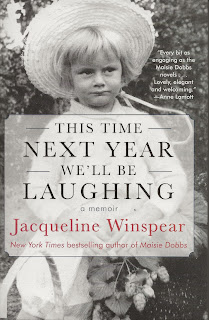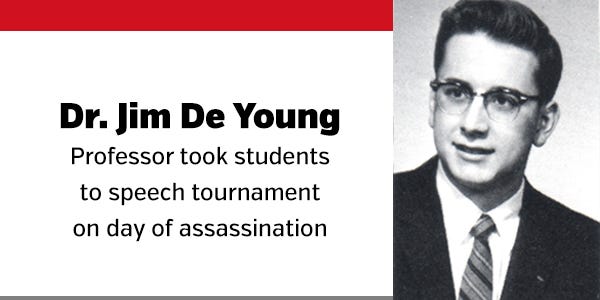Everyone needs lists to usher in the New Year. I will stick to optimism and give you my choice of six books you could gift to a theatre enthusiast
or read yourself during the upcoming winter.
They are entertaining mysteries of a sort and all come with a connection to Shakespeare. Look on the internet for available copies.
1) Let’s start with an all time absolute classic. Read or give a friend a copy of Josephine Tey’s 1951 The Daughter of Time. It will suck you into “Richard III” as an illness confined detective seeks to solve the mystery of the murder of the Young Princes right from his hospital bed.
2) If you have a soft spot in your heart for the Bard’s birthplace, another classic that might make a good read or gift is Martha Grimes’ 1984 The Dirty Duck. It has Superintendent Richard Jury discovering that Stratford-Upon-Avon’s Royal Shakespeare Theatre’s stage is not the only place where murder is committed. Only the truly initiated will know what the title refers to.
3) Do you or your recipient prefer stories with a bit more color, adventure and romance? Try a different take on “Shakespeare In Love” with Faye Kellerman’s 1989 (paper 2002) The Quality of Mercy. It immerses you in the tale of a young Jewish girl out and about in Elizabethan England who meets up with none other than William S. himself. Plenty of skullduggery and intrigue, but not a quick read at over 500 pages. Save it for a winter fireside rather than a sunny summer beach.
4) Is there a gift target or do you have a fondness for the Eastern United States? That might take you in the direction of Shakespeare with a New Haven twist. William Martin’s 2003 Harvard Yard is yet another story of an undiscovered Shakespeare manuscript. The cachet comes here from the fact that it is buried in the bowels of our most eminent university’s library. It covers Harvard’s history all the way from old John’s long ago journey from Bankside right up to the 1960’s.
5) If you like things a bit off beat or have friends with the same inclination here is the choice for you. It is hard to classify award winning novelist Margaret Atwood’s 2020 somewhat scary and weird Hag-Seed. What you get here is a modern story about a vengeance driven stage director with a similarity to Prospero. His name is Felix and he is the star attraction at a major Canadian Theatre Festival (Think Stratford). He is suddenly victimized and fired by jealous and ambitious members of his governing board just as he is planning a new and revolutionary production of The Tempest. He spends several years after his dismissal as a hermit while carrying on a ghostly alliance with the imaginary presence of his own dead daughter who just happens to be named Miranda. Finally there comes an opportunity to lead an experimental theatre program in a prison (think a remote island). He is successful in this endeavor and makes a decision to re-mount the production of The Tempest he had been working on when he was deposed all those years ago. He will use the convicts for most of the roles, but recruits the actress who he had wanted to cast in that production to play Miranda. A marvelous coincidence puts his old enemies within reach (think a shipwreck) and rekindles his thirst for revenge. Familiarity with Shakespeare’s The Tempest is not required, but it does help deepen the strangeness and the magic.
6) “Avast all ye theatre lubbers!” My favorite recent Shakespeare offering is a rip roaring historical thriller from 2018 titled The Spy of Venice by Benet Brandreth. It is raucous, romantic, and swashbuckling while simultaneously projecting an inventive theory about Will’s famous “lost years.” It hangs on the scholarly peg that if thirteen of Shakespeare’s plays have Italian settings, he must have spent time in Italy. I really loved this book, so let me give you a more thorough introduction.
It is 1585 and Shakespeare has fled Stratford and headed to London where he is eking out a scant living by holding horses at James Burbage’s “The Theatre.” There he falls in with Nick Oldcastle a Falstaff like company manager, who may hark back to an earlier play titled Sir John Oldcastle and forward to a character not yet given life on the stage by the Bard. Two other actors work with Oldcastle. One is an experienced player named John Hemmings (you may have heard that name before) and the other is a boy named Arthur who plays women’s parts. This quartet is recruited by the English Ambassador to Venice to join a delegation he is leading to bring important political communiqués from Queen Elizabeth to the Doge.
And thus hangs the tale. Little do the players realize the treacherous violence that will greet them in Venice. Amid the masked balls, poetry contests, magnificent art, and alluring women, the affairs of state are being practiced murderously by spies of all nations up to and even including the Vatican. Shakespeare remains a budding wordsmith, but Brandreth gives him the élan and fighting spirit of a musketeer. Knives flash, swords are drawn, and chases careen down narrow alleys and over Venetian bridges. It is a Will with a way you might not have imagined before.
Brandreth writes with comic poise and delicious irony. The arch villain of the piece is named Prospero not Iago. We get cameos from Anne Hathaway, Robert Greene, and the painter Tintoretto among others. It is the author’s first novel though he is already a barrister, a performer, and perhaps most importantly the “rhetoric coach” for the RSC. That means he knows his Shakespeare up down and sideways and references to the plays that will someday spill out of the Bard’s fertile mind are both clever and numerous. He even manages at one point to give us a character who exits rapidly “pursued by a bear.” Anyone who enjoys lively historical fiction will get a kick out of this book. Anyone with a theatrical interest will find it a delicious treat. Brandreth’s second novel is already available in Britain and is titled The Assassin of Verona. My guess is that it may cover the actor’s homebound trip back from Venice to London and perhaps some R and J allusions or two. Look for it!
As you wait for a return to creating or watching live theatre, may you or a friend get a bit pleasure from some of these Shakespearean Bon Bons.
Dr. Jim De Young 12/29/2020























